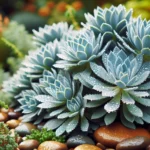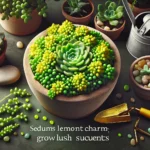Introduction to Sedum Spurium
Imagine a tapestry of lush, vibrant foliage carpeting your garden, a low-maintenance miracle that heightens your landscape with minimal effort. This isn’t just fantasy; it’s the sedum spurium domain where hardy meets beauty, resilience meets variety. From the rock gardens that emulate the Grecian wilds to the rooftop edens of urban settings, sedum spurium, or the “Dragon’s Blood” sedum, is the unsung hero of plant aficionados and professional landscape designers alike.
Sedum spurium steps out of the botanical shadows and into the sunlight, revealing a world teeming with diverse species and rich colors. With a lineage traced back to the lofty heights of the Caucasus Mountains, this plant doesn’t just survive; it thrives, inspiring a cult-like admiration among green thumbs around the world.
Why the fanfare? Sedum spurium plants are not just aesthetically versatile; they’re also astonishingly adaptable. They flourish in rocky crevices, blanket the ground with minimal soil, and burst into starry blossoms that beckon to pollinators far and wide. These plants aren’t just living decorations; they’re active participants in their ecosystems, creating a buzz of life wherever they root.
For anyone looking to dive into the world of succulents, our comprehensive guide on succulent varieties is an excellent resource to get started. It paves the path for newcomers and seasoned gardeners to explore the rich diversity of these resilient plants.
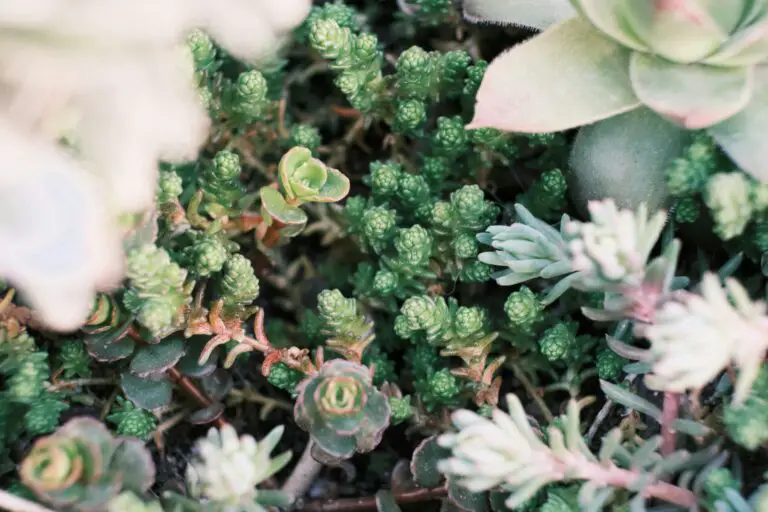
In delightfully sunny spots or partially shaded corners, sedum spuriums are not just surviving; they are evergreen, holding onto their vibrant verdure through the cold, stark winter months. They offer a year-round spectacle of nature’s tenacity and beauty—no wonder they’re a cherished treasure in gardens worldwide.
The Aesthetic Appeal of Sedum Spurium
With its vibrant hues and versatile structure, sedum spurium captures the essence of ornamental beauty in a garden. Known for its rich tapestry of colors that wax and wane with the seasons, this succulent is a visual feast. Spring welcomes it with fresh, green growth which deepens into crimson and burgundy tones come fall. In summer, a kaleidoscope of pink blossoms adds to the charm, luring the gaze of onlookers and creating a living patchwork in your greenspace.
Its adaptability is as remarkable as its beauty. Whether you tuck it into crevices in a rock garden or let it cascade over the edge of a wall, sedum spurium thrives. Imagine a green roof where it acts as a natural insulator; or as ground cover, where its dense mat-forming habit suppresses weeds and reduces maintenance needs. The versatility of this plant knows no bounds, serving both an aesthetic and practical role in landscaping.
For those looking to inject a touch of vivacity into their garden without the fuss, cultivating sedum spurium is a wise choice. Its resilience to drought and poor soil, coupled with the minimal care it demands, makes it a favorite among gardeners of all skill levels. In rock gardens, it nestles perfectly amidst stones, its colors contrasting or complementing the surrounding rocks. In borders, it provides a long-lasting, low-growing hedge of color that brings structure throughout the seasons.
Architecturally, green roofs have never been more appealing, with sedum spurium leading the charge in innovative plant choices. You’ll find this plucky groundcover atop urban buildings, where it helps to cool structures and combat the heat-island effect. But beyond green roofs, this plant’s use is only limited by one’s creativity. Picture a tapestry of it spilling from containers, or a quilt of varied succulents with sedum spurium as the centerpiece, both catching the eye and captivating the imagination.
Integrating sedum spurium into your garden is not just about embracing its functional benefits; it’s an opportunity to partake in a horticultural art form. As it blankets your garden in hues of green and bursts of pink, it will no doubt solidify its role as a cherished mainstay in diverse landscapes.
Ideal Growing Conditions for Sedum Spurium
Let’s dive into the world of Sedum spurium, where cultivating this robust succulent can turn any garden corner into a lush carpet of texture and color. Whether you’re a seasoned green thumb or newcomers to the plant parenthood, you’ll discover that the secrets to a thriving Sedum spurium are rooted in its preferred growing conditions.
Soil is the succulent’s best friend — well-draining soil, to be precise. Imagine the rocky crevices of its native habitat: Sedum spurium craves a gritty home where moisture quickly bids adieu, preventing the dreaded root rot. If you’re potting, consider a mix specific to succulents, or if you’re feeling adventurous, amend your garden soil with coarse sand or fine gravel. Remember, the keyword is ‘drainage’ – a notion this succulent takes rather seriously.
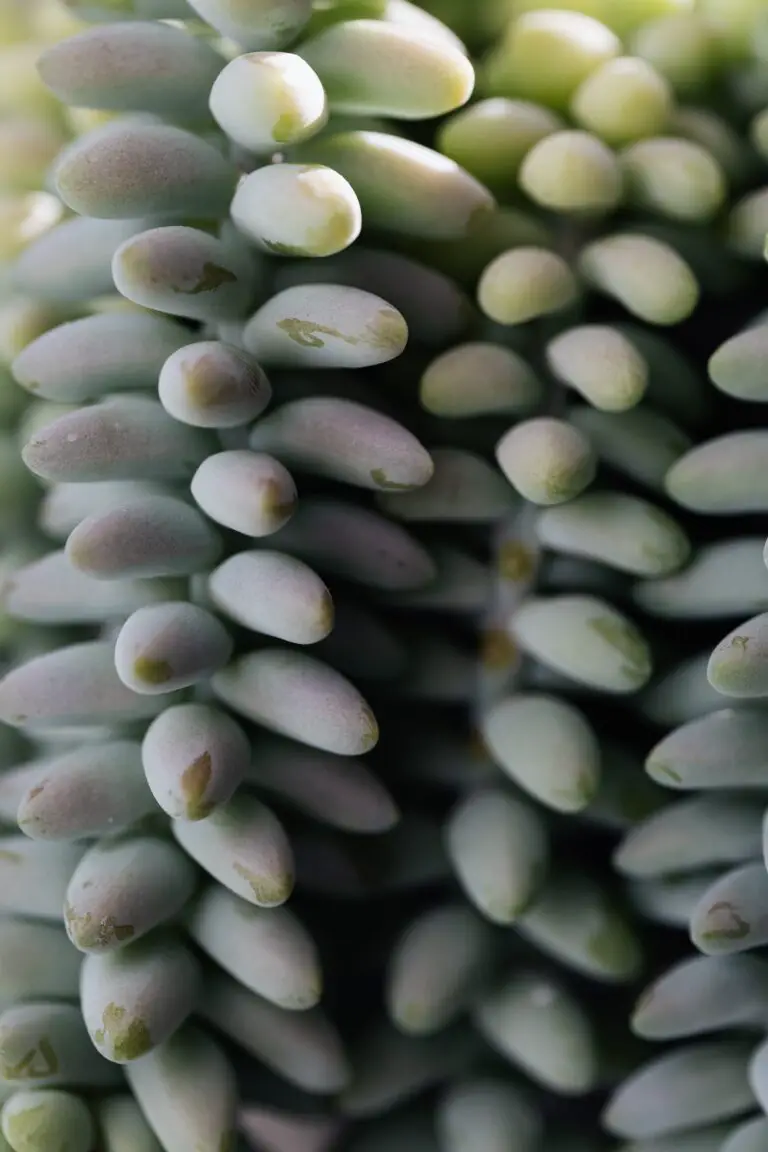
As for basking in the sun, Sedum spurium is somewhat of a sun worshipper. A spot where the sun’s rays play for at least six hours a day is the sweet spot for this sun-chaser. Partial shade works too, but too much of it, and you’ll notice the vibrant reds and greens of the leaves start to fade, as though the plant is yearning for a splash of sunshine.
The climate is another piece of the puzzle. Sedum spurium does its best dance in temperate zones. It’s remarkably resilient in USDA hardiness zones 3 through 9, cheerfully braving winter’s chill. In fact, some plant parents swear that a touch of frost magnifies its hues, turning the succulent into a spectacle of frost-kissed beauty.
When it comes to environmental companions, Sedum spurium isn’t fussy. It can huddle next to many garden comrades without complaint. Yet, waterwise buddies like other drought-tolerant succulents will ensure your garden tableau is both harmonious and sustainable. Just think of a symphony where each succulent plays a part, with Sedum spurium weaving in its unique verdant rhythm.
Embrace these insights, and you’ll find that caring for Sedum spurium is a joyful simplicity. It asks for little but gives much—spilling over rocks, tumbling across garden beds, or cascading from hanging pots with an almost musical grace. So, onwards, green warriors, to nurture these succulents into their happiest, healthiest selves!
Planting and Propagation Tips
Ready to dive into the lush world of sedum spurium? Let’s roll up our sleeves and get our hands dirty with some down-to-earth advice on planting and propagation. This resilient ground cover is not just about its good looks; it’s also about the sheer joy of watching it spread and flourish with a little bit of TLC and the right techniques.
First things first—division. It’s like giving your sedums a new lease on life. Picture this: a thriving patch of sedum spurium, ready to multiply. Early spring or late summer, choose a cool day and gently dig around the edges of your plant. Lift it with care, shake off the excess soil, and spot the natural sections where it’s begging to be divided. With a clean cut, separate the sections and replant. Voilà! You’ve mastered the divide and conquer strategy.
But wait, let’s not overlook the art of cuttings—a real game-changer. Grab some sharp scissors and snip healthy, non-flowering stems. Strip the lower leaves and let these potential new plants callus over for a couple of days. Stick them in well-draining soil, and like magic, watch them root and establish as independent plants. It’s that easy! Check out this handy guide for more juicy details on stem cuttings.
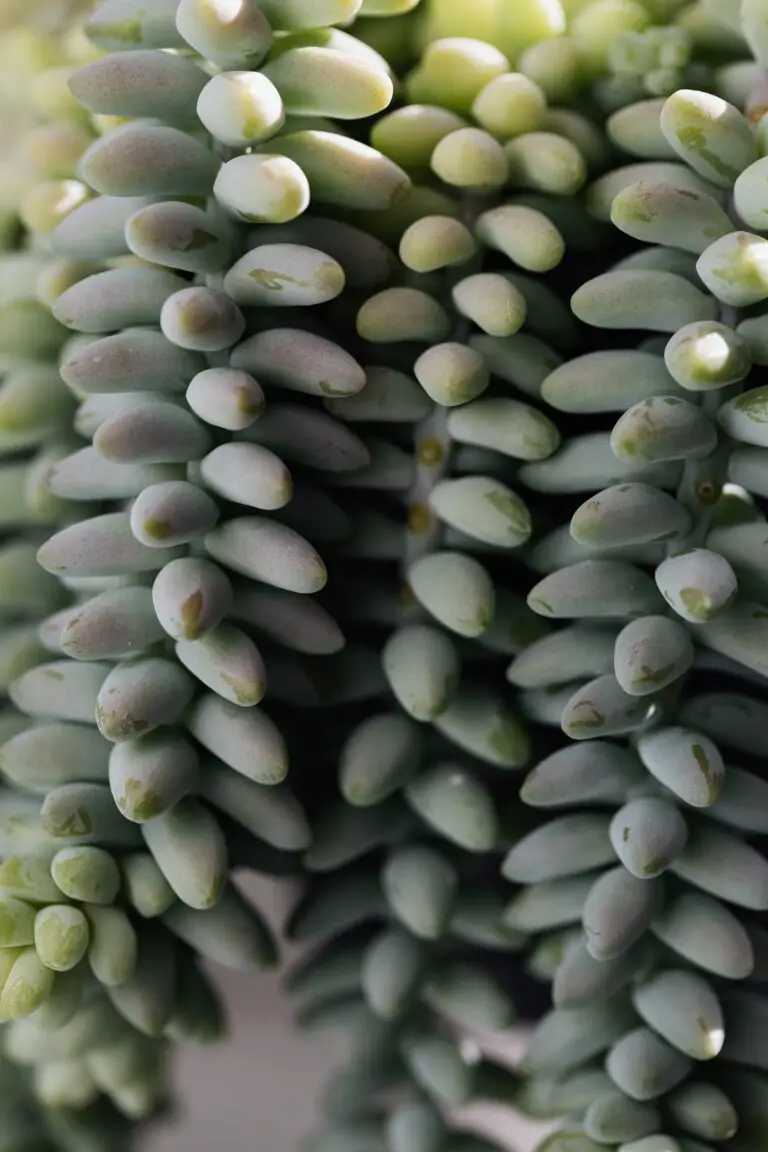
Oh, and let’s not forget the thrill of starting from scratch with seeds. Patience is key here. Sow sedum spurium seeds in well-draining soil, press them gently (no burying needed!), and keep them moist. Give them some warmth and light, and before you know it, you’ll have a nursery of tiny sedum babies making their debut. It’s a delicate dance with Mother Nature that can fill any gardener with pride.
Whether you’re a seasoned green thumb or a budding plant enthusiast, the world of sedum spurium planting and propagation is a playground waiting for you. Remember, each little stem or seed carries the promise of a new, verdant life ready to add beauty to your garden tapestry. Happy planting!
Maintenance and Care Guide for Sedum Spurium
Welcome to the verdant world of sedum spurium, a ground-hugging hero of the succulent family. Thriving with minimal fuss, sedum spurium, or Dragon’s Blood, as it’s affectionately known, paints gardens with shades of crimson and green. Let’s dive into the trifecta of care – watering, fertilization, and pest control – to keep your sedum spurium vibrant and thriving.
Watering Wisdom
Imagine your sedum spurium as the camel of the plant kingdom, expertly storing water in its fleshy leaves to outlast dry spells. To replicate its preferred semi-arid homelands, a ‘less is more’ approach to watering is key. During its growing season in spring and summer, watering once a week – or even less – is ample. Allow the soil to dry out between soakings, giving its roots room to breathe. Over-watering? That’s the fast track to root rot, so let this be your mantra: when in doubt, wait it out.
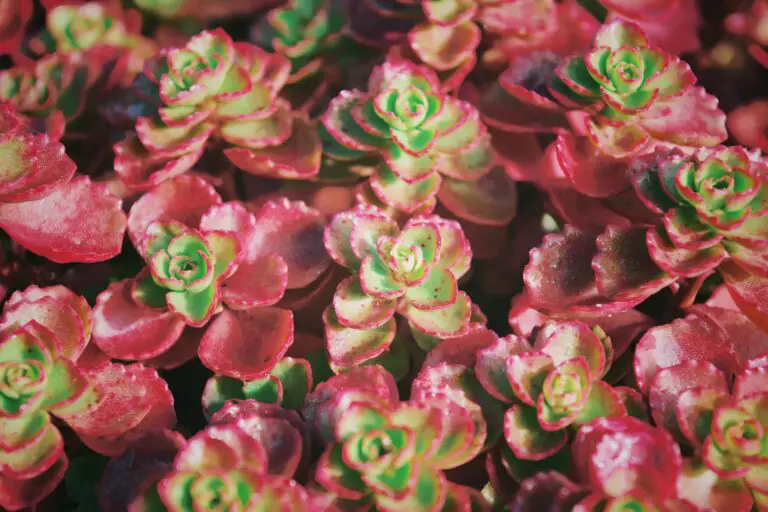
Feeding Fundamentals
Fertilization for your sedum spurium should be as light as a butterfly’s touch. A balanced, water-soluble fertilizer, diluted to half the recommended strength, once a month during its active growing phase is the secret sauce for success. Beware of over-feeding, which can spur excessive growth at the expense of that signature sturdiness and color sedum spurium is prized for. Synthesize the perfect nutrient cocktail, tailored to sedum, and watch as it flourishes with verdant vigor.
Pest Prevention Practices
Sedum spurium may be tough, but it’s not invincible. Its succulent leaves can be tempting to aphids, mealybugs, and other pesky pests. Be proactive with a watchful eye and an organic touch. Introduce natural predators like ladybugs or use insecticidal soaps that keep the ecosystem in mind. Daily inspections during the growing season can nip potential infestations in the bud. Practice gentle vigilance, and you’ll carve out a pest-free paradise for your sedum spurium.
By mastering these care essentials, not only will your sedum spurium stand as a testament to your green thumb prowess, but it will also transform your garden into a canvas awash with the ruby reds and lush greens of this resilient beauty.
Common Uses in Landscaping and Design
Sedum spurium is not just another pretty face in the world of succulents; it’s a versatile workhorse, revered for its adaptability and aesthetic versatility in landscape design. This tough-as-nails groundcover has an uncanny ability to thrive where others merely survive. Let’s dig into the myriad of ways ‘Dragon’s Blood’ and its kin can spice up your green spaces!
As a Ground Cover
Envision a carpet of vibrant greenery, interspersed with starry flowers, cascading along your garden paths and sprawling over rockeries. Sedum spurium, with its fast-growing prowess, provides an almost instant mat of foliage that excels in choking out weeds and minimizing soil erosion. The beauty of this sedum lies not only in its floral display but also in its minimal maintenance requirements, making it a favorite among gardeners looking to create a lush look with little fuss.
Vertical Gardens: A Living Tapestry
Imagine a drab wall transformed into a living masterpiece; sedum spurium takes vertical gardening to the next level. With its shallow root system and ability to retain water, this plant is ideal for sprucing up green walls or cascading from hanging baskets. It’s like painting with nature’s palette—each season brings a change of color, from deep greens in summer to fiery reds in fall, ensuring your vertical garden remains a focal point year-round.
Xeriscaping: Thriving with Less
In an era where water conservation is key, sedum spurium stands out as a hero in xeriscaping. This practice, which involves selecting plants that require minimal watering, is gaining traction in arid and drought-prone regions. Sedum spurium’s drought tolerance makes it a prime candidate for xeriscaping, ensuring that beauty and sustainability can coexist harmoniously. Its resilience in face of water scarcity exemplifies how low-input gardening can yield high-impact results.
For those who wish to explore the practical propagation of sedum spurium, the video below offers a wealth of tips on multiplying these versatile succulents with ease:
The applications of sedum spurium in landscaping are as diverse as the plant itself. From its use as a rampant ground cover to its role in the avant-garde world of xeriscaping, this succulent is a living lesson in versatility. Its inclusion in your design toolkit can open up a world of creative possibilities, proving that even the smallest plants can make a significant impact.
Troubleshooting Common Issues with Sedum Spurium
When the vibrant leaves of Sedum spurium start losing their luster, it’s not just the plants that suffer; gardeners feel the pinch, too. Whether it’s the betrayal of a fungus leaving its mark, or aphids congregating like unwelcome guests at a picnic, dealing with these setbacks is part of the gardening adventure. Let’s get down to the nitty-gritty of combating diseases, warding off pests, and rectifying environmental grievances to keep your sedum spurium in top shape.
Battling Diseases: Don’t Let Fungus Foil Your Foliage
You’ve raised your sedum spurium with tender love and care, only to find unsightly spots and wilted leaves betraying the onset of a fungal fiasco. Fear not, for with the right strategy, you can reclaim the glory of your greens. Begin by playing detective—examine your plants for telltale signs like a powdery coating or black spots. Once you’ve identified the culprit, it’s time to act. Prune affected areas and introduce a trusty fungicide into your garden’s defense arsenal. And remember, prevention is key; ensure good air circulation and avoid overhead watering to keep those sneaky spores at bay.
Keeping Pests at Bay: A Daily Duel with Aphids and More
Your sedum spurium might as well be a Michelin-starred restaurant for aphids, and they don’t take reservations. These sap-suckers descend en masse, turning robust stems into limp, lifeless twigs. But don’t let them dine out on you! Arm yourself with insecticidal soap or neem oil, and show these intruders the door. It’s not just aphids either—watch out for scale insects and mites that might fancy a nibble. Regular patrols and prompt action will keep these critters from calling your garden home.
Environmental Stresses: When Mother Nature Throws a Curveball
Sometimes the elements conspire against your sedum spurium. Too much sunshine beating down or not enough can make or break their day. And let’s not forget the water works—too much enthusiasm with the hose can leave roots waterlogged and gasping for air, while drought conditions can test their survival skills. Strike a balance with the right amount of TLC, and your sedum spurium will thrive. They’re resilient little troopers when they’re given the chance to acclimate to their surroundings.

Ecological Benefits of Planting Sedum Spurium
Imagine a swath of lush greenery that not only delights the eye but also serves as a bastion for local biodiversity. This is the reality when gardening enthusiasts embrace the verdant allure of sedum spurium. Renowned for its hardy ground-covering abilities, this succulent entices more than just admiring glances. It’s a magnet for pollinators, a haven for beneficial insects, and a vibrant thread woven into the fabric of any thriving ecosystem.
Why is sedum spurium akin to an environmental superhero? Firstly, picture a garden vibrant with butterflies and bees. These essential pollinators are irresistibly drawn to the star-shaped blossoms of sedum spurium. It’s a veritable buffet for these creatures, which play a crucial role in the pollination of many other plants, bolstering food security and ensuring the survival of diverse floral species.
Beyond pollination, sedum spurium contributes to ecological health by enhancing biodiversity. Each patch acts as a micro-habitat, supporting an array of insects and microorganisms that form the backbone of any food web. These in turn attract a variety of birds, creating a symphony of avian melodies and providing natural pest control. This cascade of life flourishes, all thanks to the humble yet heroic ground cover that is sedum spurium.
Let’s not overlook the ability of sedum spurium to combat soil erosion – a significant environmental challenge. Its dense mat of foliage and root systems binds the soil, protecting it against the ravages of wind and water. In areas prone to erosion, planting this sturdy succulent can mean the difference between barren wastelands and thriving landscapes.
And finally, the water-wise nature of sedum spurium deserves applause. In a world where water conservation is of utmost importance, this drought-tolerant plant asks for little but gives so much. It’s a testament to sustainable gardening practices, reducing the need for irrigation and preserving our precious water resources.

Companion Plants and Design Synergies
As you delight in the spread of Sedum spurium across your garden canvas, let’s sprinkle in some companion plants that not only complement its growth but also elevate your garden’s aesthetic harmony.
When it comes to creating a showcase that’s both visually striking and beneficial for your stonecrop, think about weaving in the whisper-soft plumes of ornamental grasses. Grasses like Festuca glauca (Blue Fescue) offer a contrasting texture and form to the succulent leaves of Sedum spurium. Picture the wind dancing through Blue Fescue’s icy-blue blades beside the robust Sedum mat—pure poetry in motion!
For a splash of color, why not try the bold and beautiful Echinacea purpurea (Purple Coneflower)? The upright stature and vibrant petals of the Coneflower juxtaposed against the low-growing, verdant spread of Sedum spurium creates a layered masterpiece. Imagine: bees and butterflies flitting from one purple throne to the next, with Sedum at their feet—a pollinator’s paradise!
And let’s not forget the dainty dazzle of Lavandula (Lavender). With its fragrant spires weaving through the Sedum patches, this combo not only entices the senses but also brings a heady dose of cottage charm to modern gardens.
Not only do these plant partnerships offer aesthetic appeal, but they also support each other’s wellbeing. The deep roots of perennials can help break up the soil, making it easier for the shallow-rooted Sedum to spread. In return, Sedum’s dense coverage helps retain soil moisture, curbing evaporation and benefiting its taller companions.
Visualizing the Pairings
But don’t just take my word for it, let’s dive into a visual exploration. Here’s a little snippet that encapsulates the beauty and utility of companion planting with Sedum spurium:
${videoEmbedCode}
As with any garden design, remember to consider the light, water, and soil requirements of your chosen companions to ensure they align with the conditions favored by Sedum spurium. With these plant allies by its side, your garden will not only look stunning but will thrive with ecological balance.
${videoEmbedCode}
Personal Experiences and Case Studies
When it comes to the lush tapestry of groundcovers, sedum spurium proudly takes center stage in many gardens. Let’s dig into stories that root us in the reality of its flourishing presence. Picture this: a cascade of vibrant green leaves interlaced with starry flowers spilling over a stone wall in a suburban backyard. This isn’t a snapshot from a glossy magazine; it’s the result of a gardener’s careful orchestration and affection for sedum spurium.
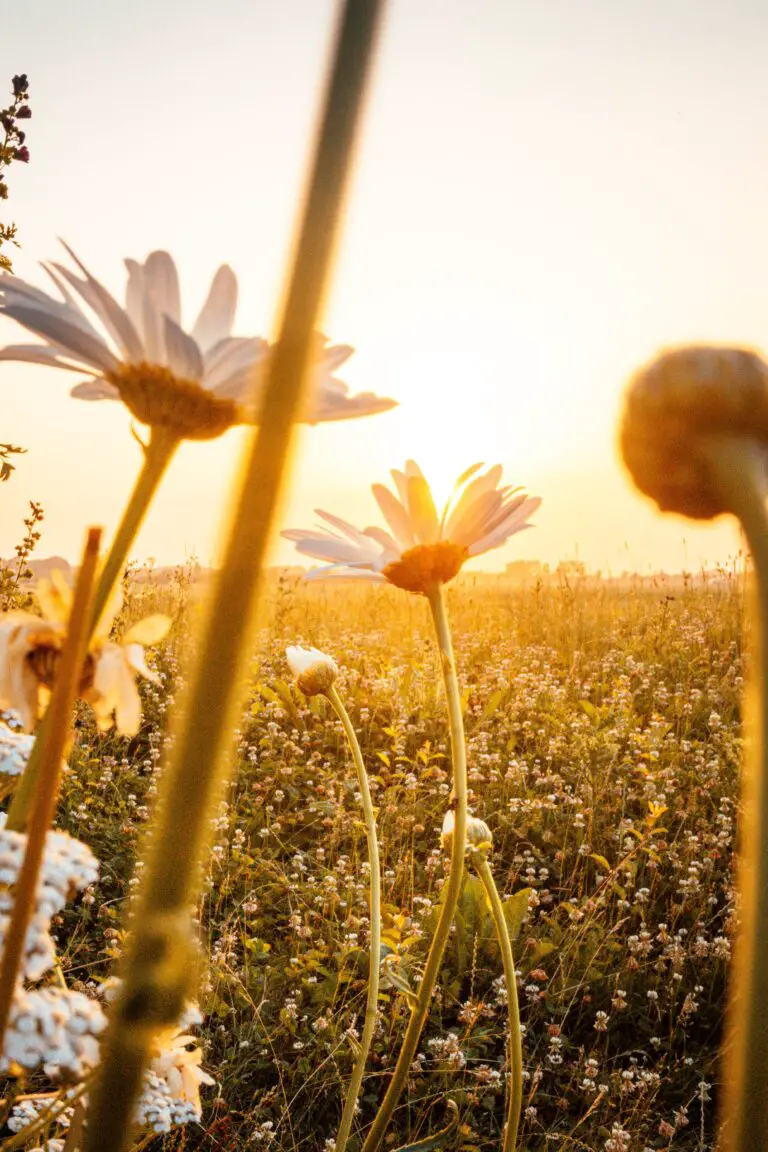
In one heartwarming case, a community garden in the heart of the city introduced sedum spurium as a resilient companion to their vegetable plots. Not only did it add a zest of color and texture, but it also attracted pollinators essential for their crops. The gardeners watched in awe as their urban oasis thrived, with the sedum spurium as the unsung hero knitting the biodiversity together.
Another tale comes from a coastal retreat, where salt spray and sandy soils pose a challenge to most plants. Yet, here, sedum spurium emerges as a champion, binding the dunes with its hardy nature and offering a lush groundcover that echoes the rhythm of the waves. It’s a testament to its versatility and an inspiration for gardeners wrestling with less than ideal conditions.
Each story echoes a similar sentiment: sedum spurium adapts, endures, and excels. Whether it’s gracing the tops of green roofs, softening the edges of pathways, or bringing life to rock gardens, its humble presence offers a study in the resilience and beauty of nature—truly, a living tapestry unfurled across the canvas of our gardens. In the dance of cultivation and care, it is clear that sedum spurium does not simply grow; it thrives, enlivening every space it inhabits.
Frequently Asked Questions about Sedum Spurium
Welcome to the down-to-earth world of Sedum spurium, where we get our hands dirty so you won’t have to. As enchanting as these succulent groundcovers are, they do spark a series of questions from green thumbs and plant novices alike. Let’s dive into some real talk about these rugged beauties.
Caring for Sedum Spurium: What Should I Know?
Picture this: A sun-soaked rockery with Sedum spurium cascading over the edges like a verdant waterfall. Sounds idyllic, right? And it’s totally achievable! These plants are sun worshipers, so place them where they can bask in full glory for at least six hours a day. Water them when the soil feels like a wrung-out sponge, and voilà – you’re on your way to sedum success.
How Do I Propagate These Succulent Wonders?
Imagine breaking off a piece of your favorite chocolate bar – that’s how simple propagating Sedum spurium can be. Snip a healthy stem, let it callous for a day or two, then nestle it into well-draining soil. With a little patience and a sprinkle of water, you’ll soon have a miniature sedum spawning from the earth.
Tackling Troubles: What Are Some Common Issues?
Even the hardiest plant has its achilles heel. For Sedum spurium, overwatering is the kryptonite. Too much H2O and your plant’s roots might throw in the towel. If you notice your sedum looking a bit droopy or discolored, check the moisture levels. Stick to a ‘less is more’ watering philosophy to keep those roots happy and healthy.
Another archenemy? Poor lighting. Just like how we might feel sluggish in a dimly lit room, Sedum spurium can’t perform its photosynthetic best without enough light. Keep them shining bright, and they’ll return the favor with lush, vibrant growth.
Some say a picture’s worth a thousand words, so take a gander at this stunning representation of Sedum spurium’s glory:
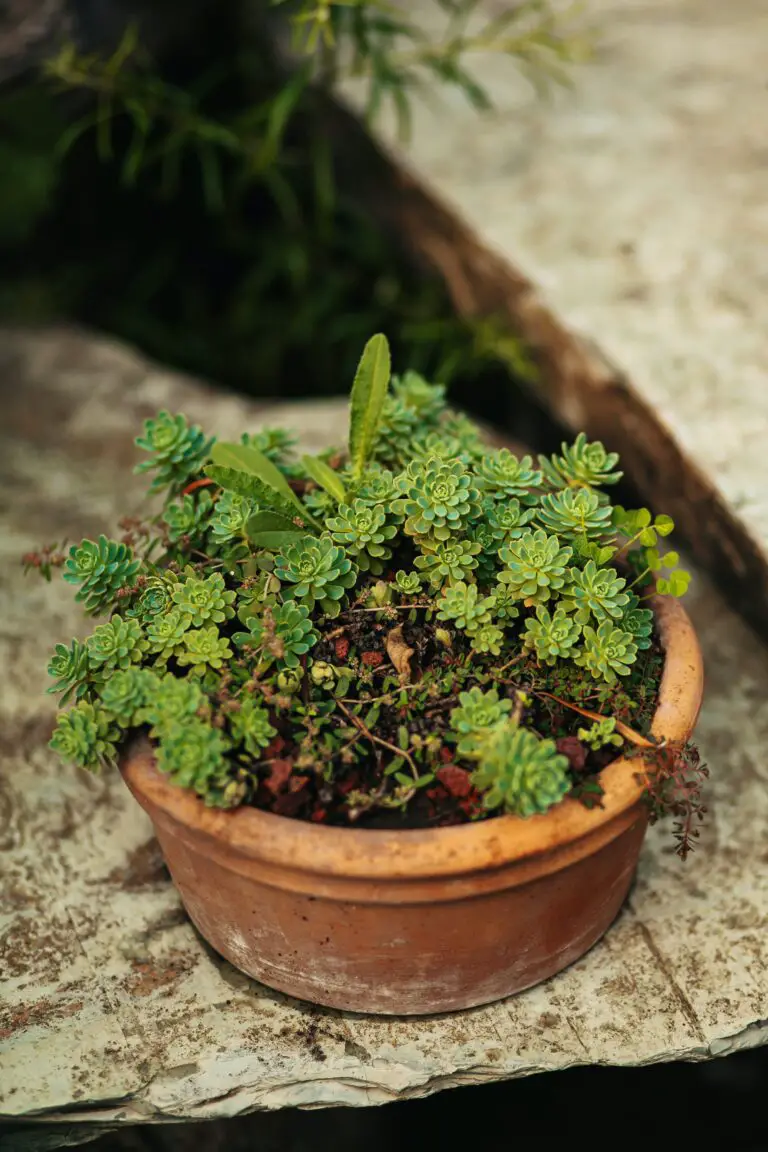
Isn’t nature’s resilience astounding? Seeing how this modest plant can thrive even in the cracks of concrete, it’s a testament to its tenacity. You too can cultivate this hardy groundcover with ease. Just remember, sun, sparse water, and a solid propagation strategy are your tools for unveiling the secrets of Sedum spurium.

